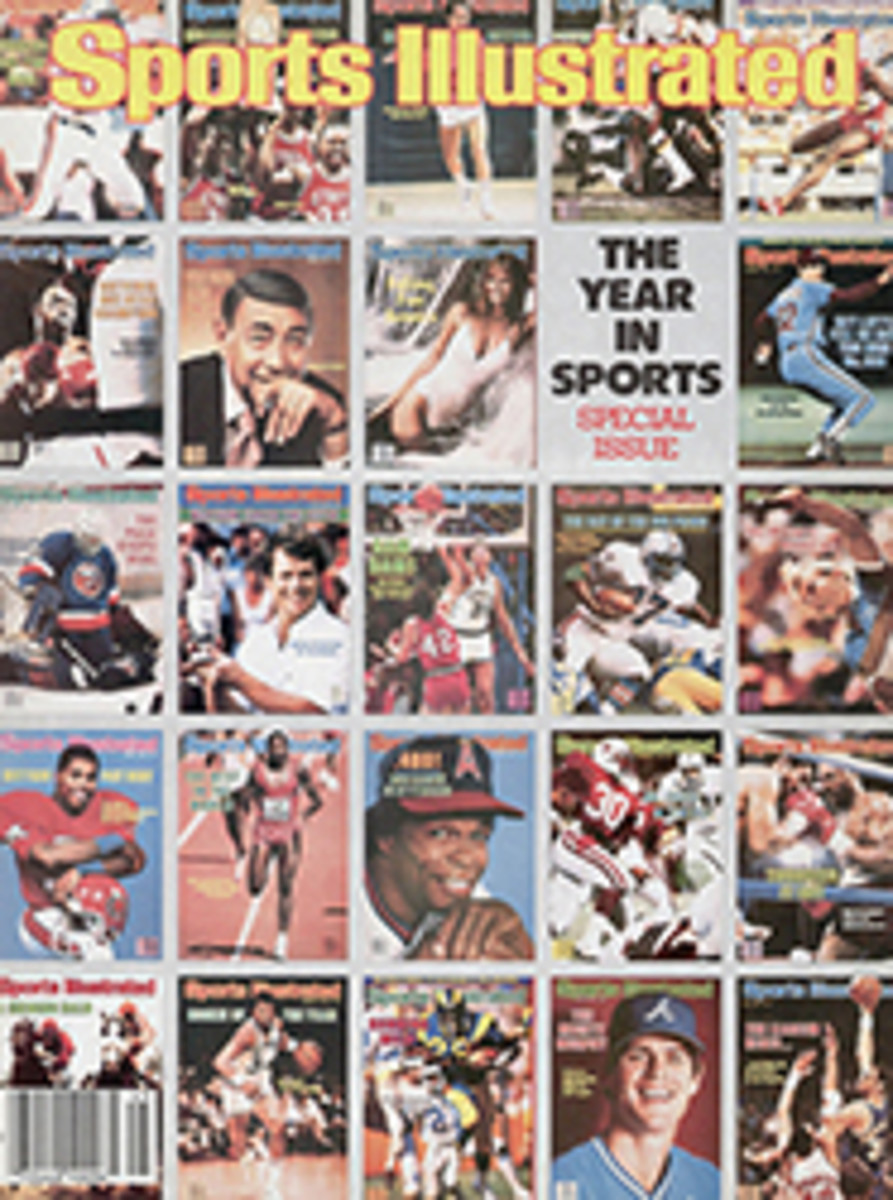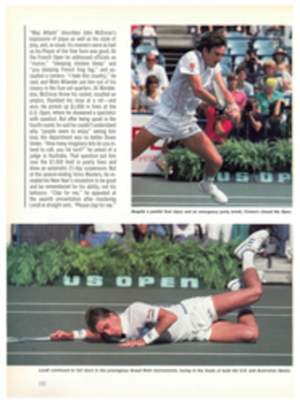
GOLF
The burning question on the PGA Tour was, "What's hot and what's not?" The Titleist 384 Tour, which is said to carry farther because of its aerodynamically designed pattern of 384 dimples, quickly became the ball of choice. Seve Ballesteros used it to win the Masters, Larry Nelson the U.S. Open and Hal Sutton the PGA. Jack Nicklaus, who liked MacGregor balls so much he bought the company, sampled the competition's wares for three tournaments. He called the 384 the hottest ball he had ever used—too hot, in fact—and accused Titleist of going too far. With the 384, he said, he was driving 20 to 25 yards farther than he had a few years earlier. (Actually, Nicklaus' average driving distance in '83 was three yards shorter than in 1980.) "Ban the ball," he barked, and the Great Dimple War began. Just before the U.S. Open, MacGregor unveiled a 392-dimple model bearing the Golden Bear's name. In August, the USGA deep-sixed the 384, reasoning that a player could take unfair advantage of its asymmetrical dimples by the way he put it on the tee. Two months later, Titleist introduced a more symmetrically dimpled 384. At year's end, both hot balls were on the USGA's approved list and others were being considered.
SHOTS FOR THE GREEN
When second-year pro Sutton won the PGA Championship, he moved into 77th place in career earnings, one notch ahead of Sam Snead. But by year's end he still trailed Snead (and women's tour veteran Kathy Whitworth) in victories, 84 to three. With four acupuncture needles in his right ear and knickers on his legs, Payne Stewart shot a 70 on the opening day of the Masters. Asked about the needles, Stewart replied, "One is for temperament, one is for concentration, one is for anxiety, and I can't remember what the fourth is for." Ballesteros, a native of Pedrena, Spain did a little needling of his own by saying he spoke "six or seven" languages: "Spanish, Argentine, Cuban, Mexican...." Ballesteros was eloquent on the first four holes of the final round, going birdie, eagle, par, birdie to wrap it up early. On the 16th hole of the U.S. Open, Nelson thought he had struck his 60-foot birdie attempt too weakly. It sank, though, and so did runner-up Watson.
Gary Player and Arnold Palmer were the big winners in a $360,000 made-for-TV skins exhibition that also featured Nicklaus and Watson. On the par-3 12th, Palmer hit the green in regulation, one of the few times he did, and his 40-foot putt dived in for $100,000. On the 17th, Player sank a five-foot putt worth $150,000. Afterward, Watson, who pocketed only $10,000 for the day, accused Player of cheating on the 16th hole by pulling out a rooted leaf of a crabgrasslike weed next to his ball. "I've got to get my gander up," said Sheehan during the LPGA Championship and then tried to explain. "That's a goose, isn't it? They get mad. That's what I need, something to get me going." So she birdied five holes on the back nine and won by two strokes.
The British Open wasn't rough for Tom Watson, who won it for the fifth time.
"Bear Apparent" Sutton (above), was the top money-winner; Joanne Carner (bottom left) wedged herself atop the LPGA money list; Gene Littler had few reversals in senior events.
Ballesteros held on to win his second Masters; Patty Sheehan's 279 kissed off the LPGA field; Calvin Peete capped the year with two victories.
The raining champion of golf was the foul weather: The only major event that didn't get a soaking was the British, where it's expected.
Treed at the TPC, Andy Bean hit a seeing-eye iron—but missed the cut.
NINE PHOTOS

